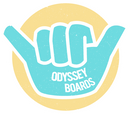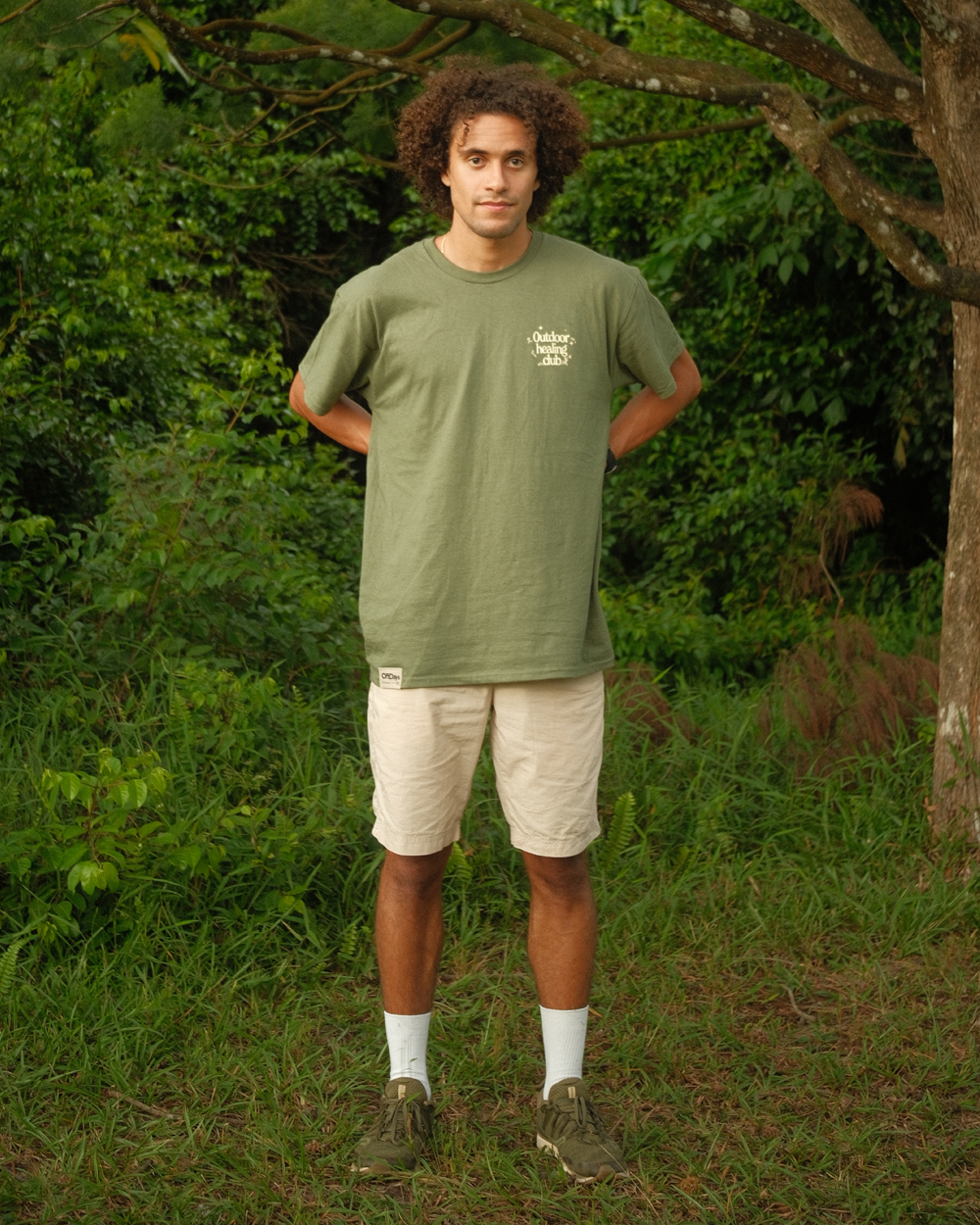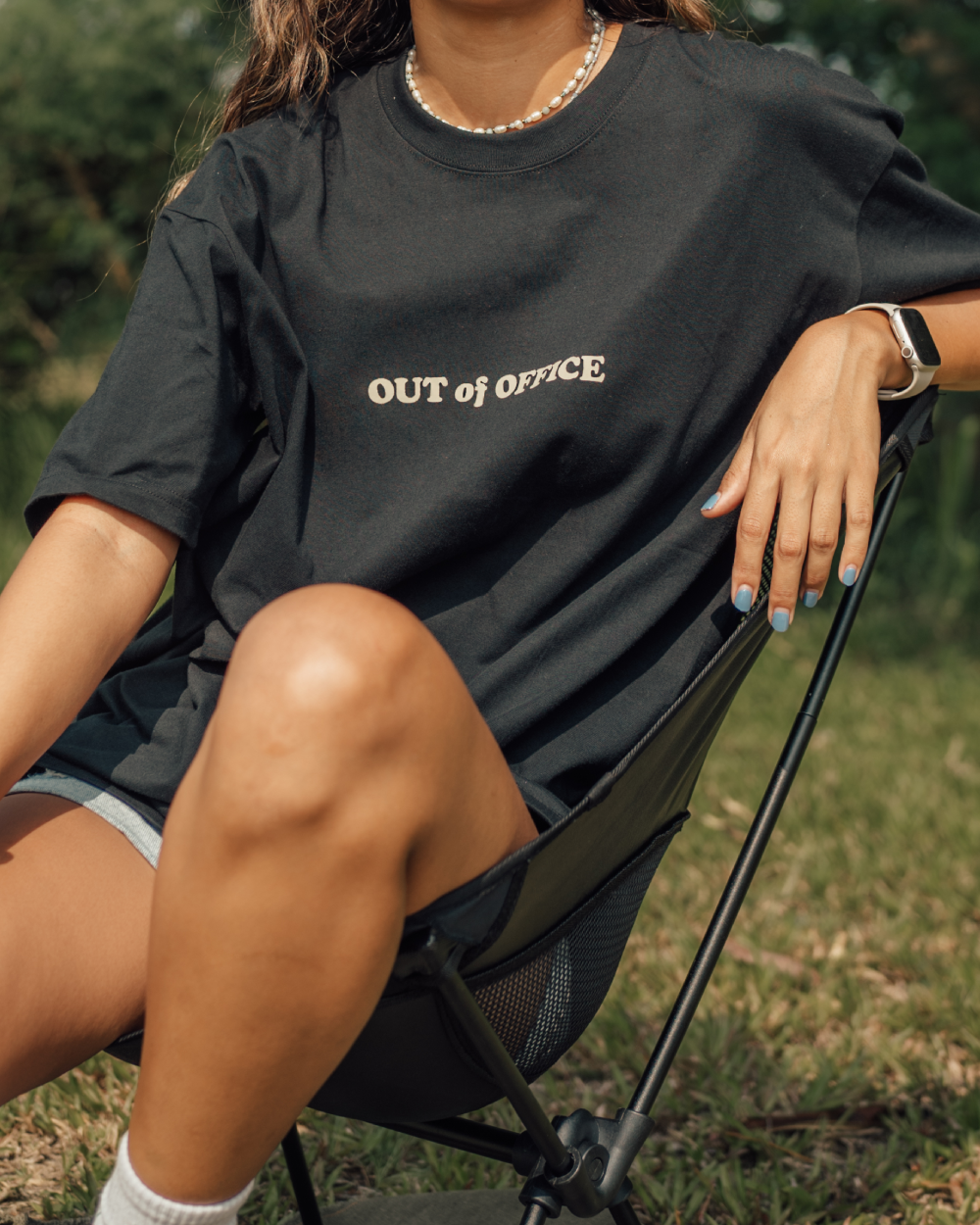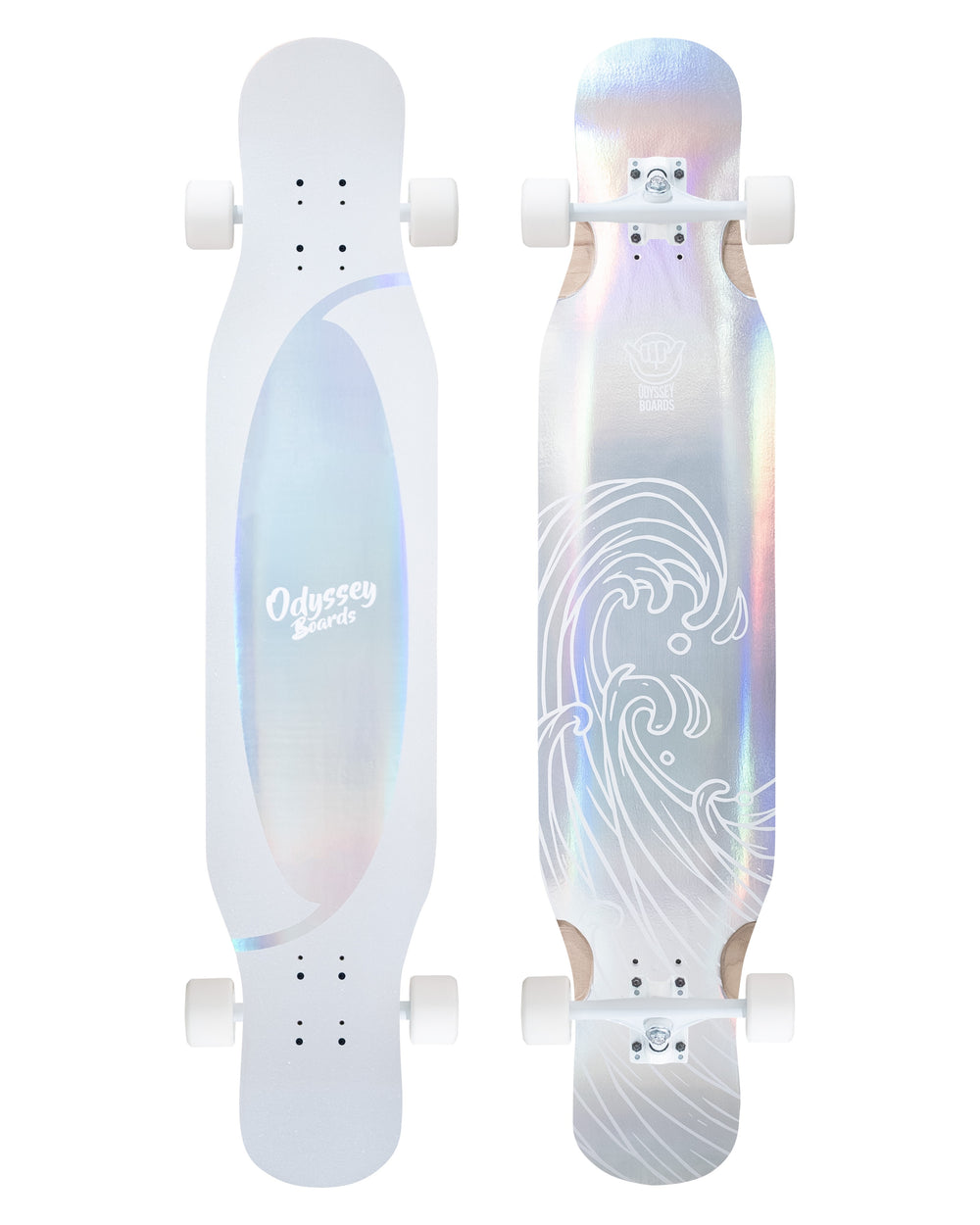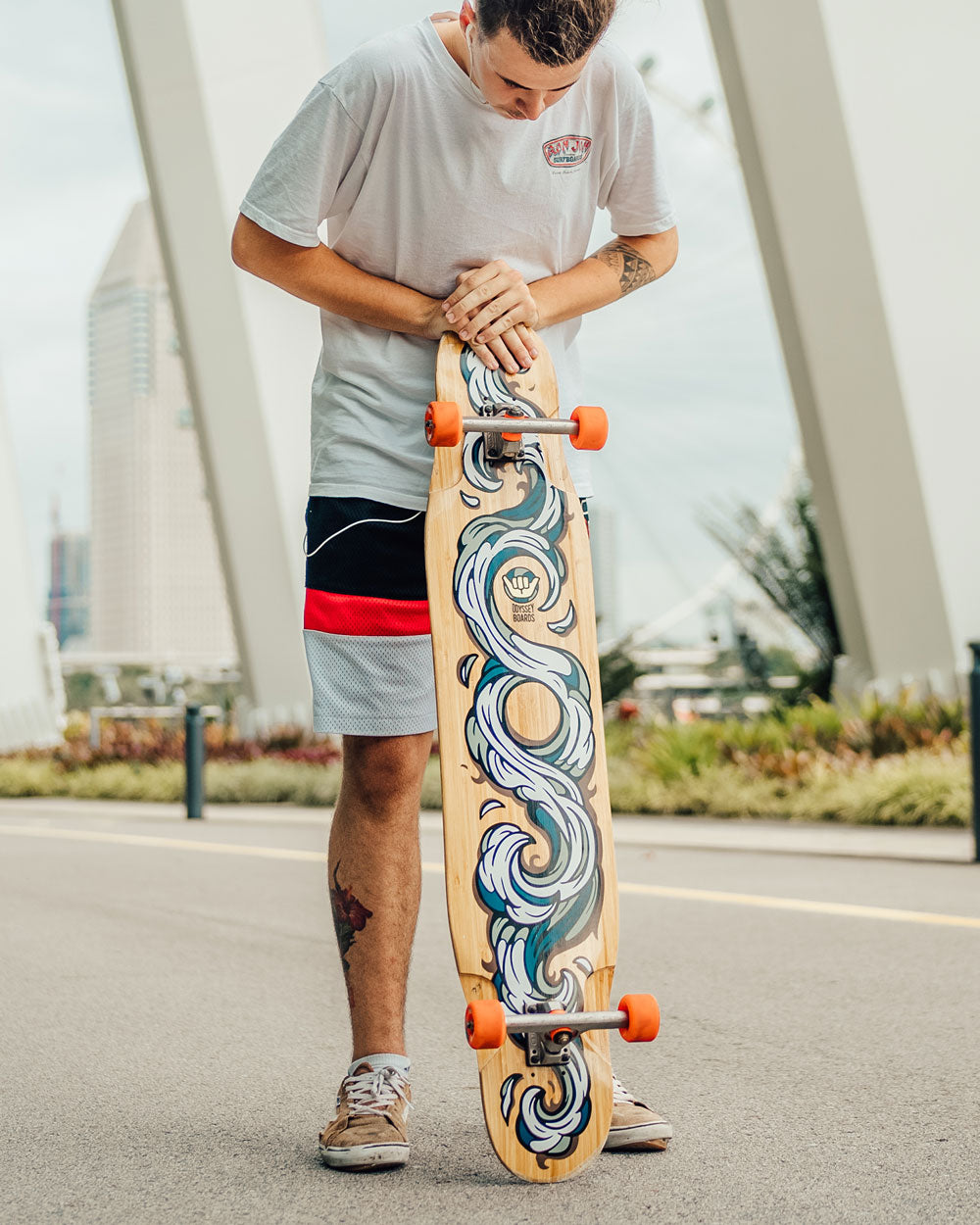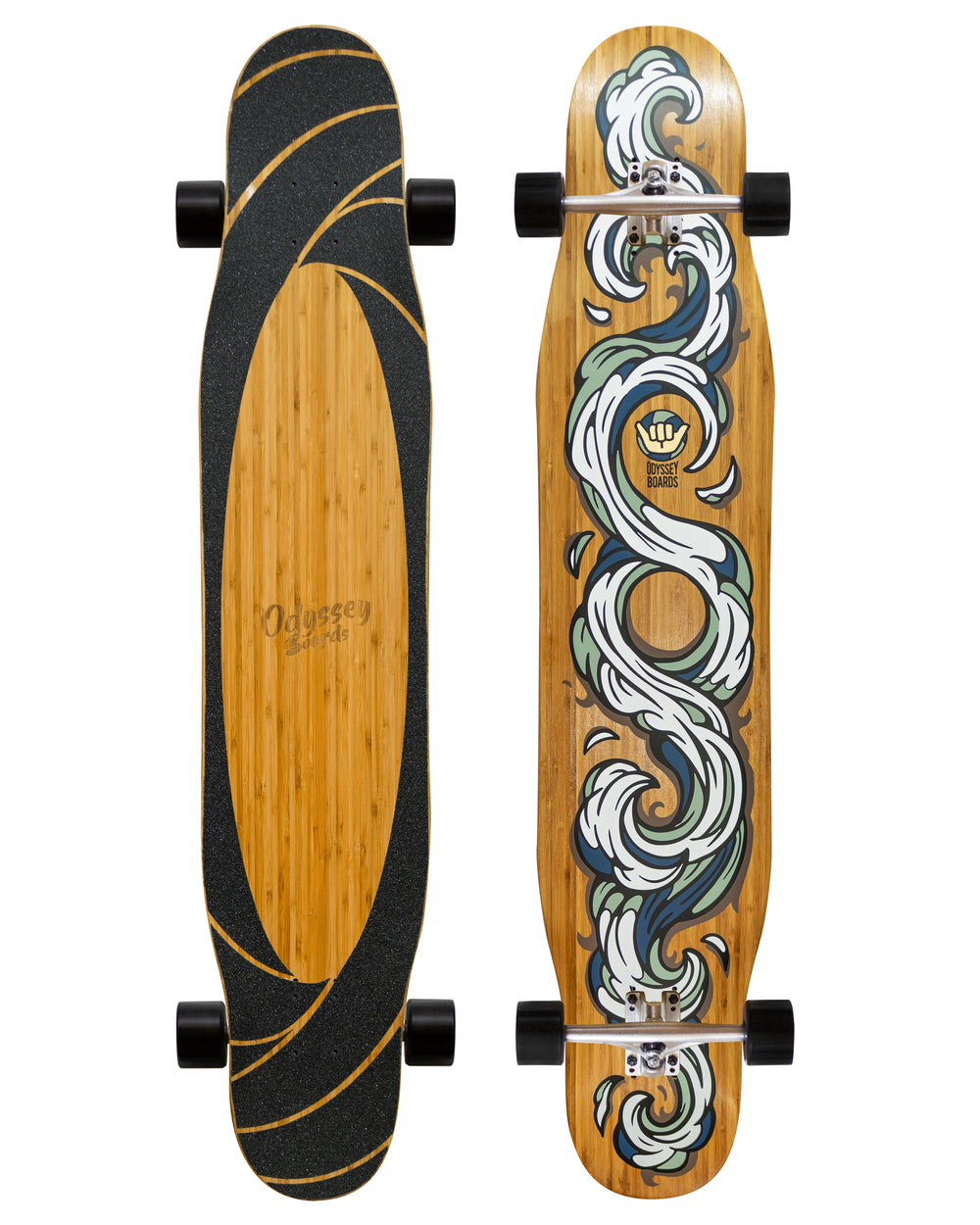How longboarding started
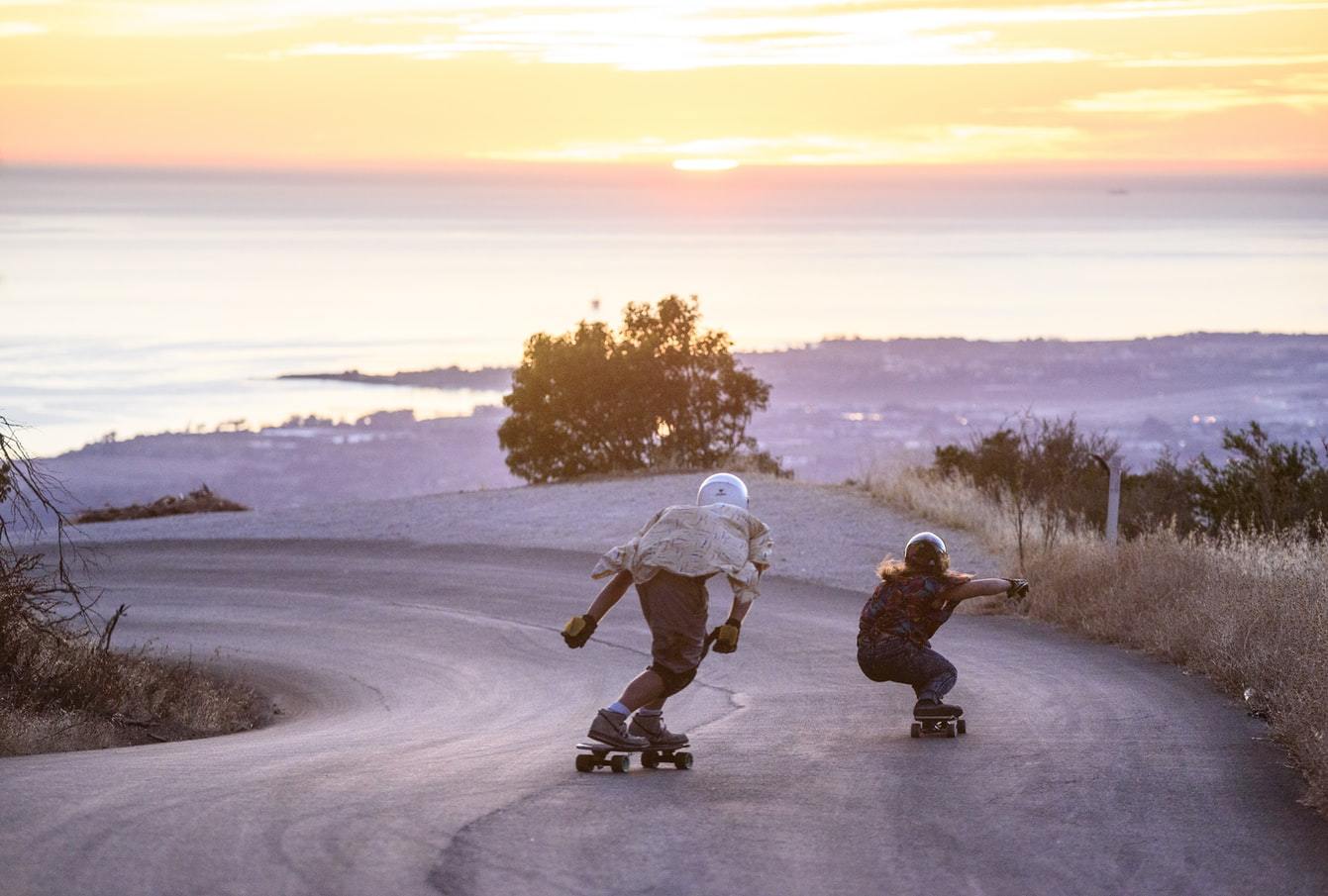
Have you ever wondered how beautifully carved decks of wood found themselves on two pairs of wheels, and eventually on concrete ground? Well, that was something we asked ourselves when we just started longboarding. Today we’re here to answer that question for you.
The origins of longboarding is everything but dull and boring, very much unlike the dreary history classes you had in school. So, let’s dive into our time travel machine and go back in time!
1950-60s: Creating a new wave (literally)

Surfers in Hawaii were perplexed that they couldn’t get their surfing fix because of the weather; sometimes the sea waves just weren’t ideal for surfing! Their urge to surf regularly led to them reinventing the skateboard, giving them longer decks and larger wheels to replicate the rolling motion of waves and to train their balance. Small hills became regular training spots for their surfing moves.
1970-80s: Reinventing the wheel for good

The pioneer models of longboards were, to be honest, too gnarly. Wheels were originally made of clay (some even metal), which made turning at high speeds dangerous since you’re almost guaranteed to slide into your demise. However, Frank Nasworthy revolutionized the sport with his invention of the world’s first polyurethane skateboard wheels. These bad boys had much more grip, and provided better control when performing sharper turns/slides.
Empowered with this new equipment, a small group of longboarders started honing their techniques and made significant upgrades to the traditional design of the longboard. Longboarding also finally made its debut on print media, on the 1978 issue of SkateBoarder Magazine.
1990-2000s: Ready for liftoff

While skateboarding took off in the 1980s with new skateboard companies and famous teams like the Bones Brigade (which the legendary Tony Hawk was in), longboarding unfortunately remained an underground sport.
However, the proliferation of the internet in the 90s made it possible for longboarders to share their experience with a global audience. Instead of the originally intended use to replace surfing, people also realized it was a good substitute for snowboarding. Fun fact: We have a customer who bought our Nahoa Longboard because she couldn’t wait till her next snowboard session!
Building on the momentum, San Diego’s Sector 9 initiated the mass production and distribution of longboards to the market. The skateboarding company then also created reverse kingpin trucks which gave more stability and overall better performance!
Longboarding’s popularity soared - Downhill skating events became much more common and The X Games would soon feature longboard racing as an extreme sport. Better setups and more participation gave rise to new, creative types of longboarding.
2010-Present: The evolution continues

Over the years, longboarding has come around a full circle of styles to embrace more street-oriented tricks like freestyle and dancing. This sport has evolved into a community where longboarders around the world meet up for skate sessions and competitions, both globally and locally!
If you think about it, most creators of all the longboard styles you see now are still practicing the sport. Longboarding is definitely still evolving rapidly and now’s your chance to be part of this movement to shape what longboarding means to the world. So with all said and done, are you ready to get started?
